
SEO
7 Tools the Insiders Use for Faster Keyword Research
Keyword research is the foundation of successful SEO.
By understanding the different words and phrases customers use to solve their pain points, keywords get your foot in the door and constitute your first step toward an eventual sale.
Without a clear understanding of the keywords your customers are likely to use to search for your product or service, you could waste time and resources creating assets that don’t line up with user needs.
This results in unqualified leads, or worse, your site becomes an exercise in finding Waldo.
In this post, I’ll reveal the trade secrets that experts use to conduct fast, efficient, and highly-targeted keyword research to develop the most productive campaigns.
What Is A Keyword?
Before you embark on your adventure, let’s make sure we understand what keywords are and how most people carry out keyword research.
A keyword is the information individuals enter into the input field of search engines.
For example, let’s say I’m interested in basketball. I might type the following phrases into Google in order to find what I’m looking for.
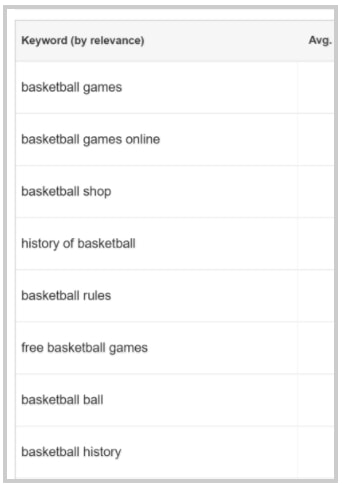
Since basketball is pretty vague by itself, searchers usually tend to add more information to increase their chance of finding exactly what they want.
Let’s break down the different formats of keywords you’ll come across:
Head keywords
These are broad terms that enjoy large search volumes. However, it’s hard to nail down the intent behind these phrases.
For example, a search for “basketball hoops” doesn’t reveal much about a user need.
Are they trying to learn more about basketball, find a place to play hoops, or buy a hoop for their own backyard?
Body keywords
A little more focused than head keywords, these phrases reveal user intent.
A search for “basketball hoop types” narrows what users want but still doesn’t classify the type of intent (more on this later).
Tail keywords
These are ultra-specific long-tail phrases tell search engines exactly what a user wants.
A search for “basketball hoops for sale in Carmichael” is pretty revealing.
Here’s a graphic to help you conceptualize the different formats:

Keywords with long-tails enjoy low competition and high conversion rate as they are used by individuals near the end of their purchase cycle.
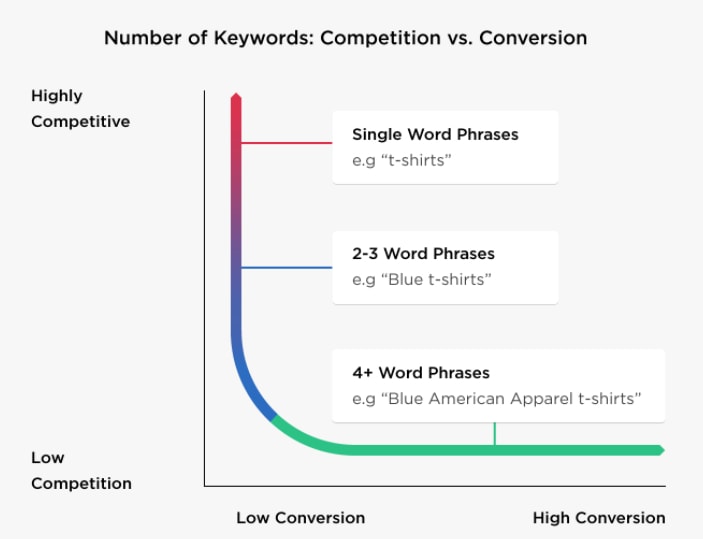
However, you trade traffic volume for conversion if you get overly specific. The key is to find the best balance to drive the right traffic to your page.
How The Keyword Research Process Works
As a marketer, your choice of keywords will dictate the direction of your SEO campaign.
Your entire content strategy and site development process hinges on the words and phrases you determine to be the most likely to bring in traffic that converts.
With so much riding on keywords, you need to perform meticulous keyword research.
Let’s stick with our basketball example.
Discovery phase
Brainstorm a list of seed keywords you think customers are searching for in your niche.
Ask yourself what problem customers are trying to solve in relation to your product and service and how they may communicate that.
You should also make use of data that already exists:
- Speak to your sales or customer support team. What do customers ask for when they first call or write?
- Read online comments and questions.
These can provide some great insight.
For basketball, you might come up with the following ideas:

Another strategy is to read your competitor’s content for keywords, intent, and themes.
If you have a direct competitor in the field that’s got a well-honed Google Ads campaign or pops up first in searches you feel your page should appear in, take advantage of their success. More on this in a moment.
Grouping
With a list of worthy keywords at your disposal, start grouping them into categories based on shared themes or intent.
For each group, create ‘search personas’ that help you see the world through their lens.
Details about the searcher’s age, gender, income, hobbies, struggles, and aspirations can help you narrow down your audience groups.
For example, let’s pretend you are a shoe supplier setting up a new site.
Your search persona may look something like this:
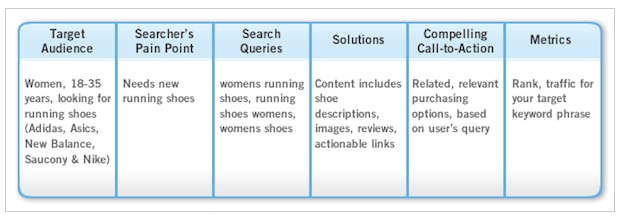
Determining the value of a keyword
Once you’ve organized everything, the next step is to figure out which keywords are worth going after by comparing the value of each on your list.
A keyword’s value is based on:
- Monthly search volume in relation to competition level
- How well it converts
Google’s Keyword Planner can help you determine search volume for keywords.
Here’s what the results look like for the keyword brewery:
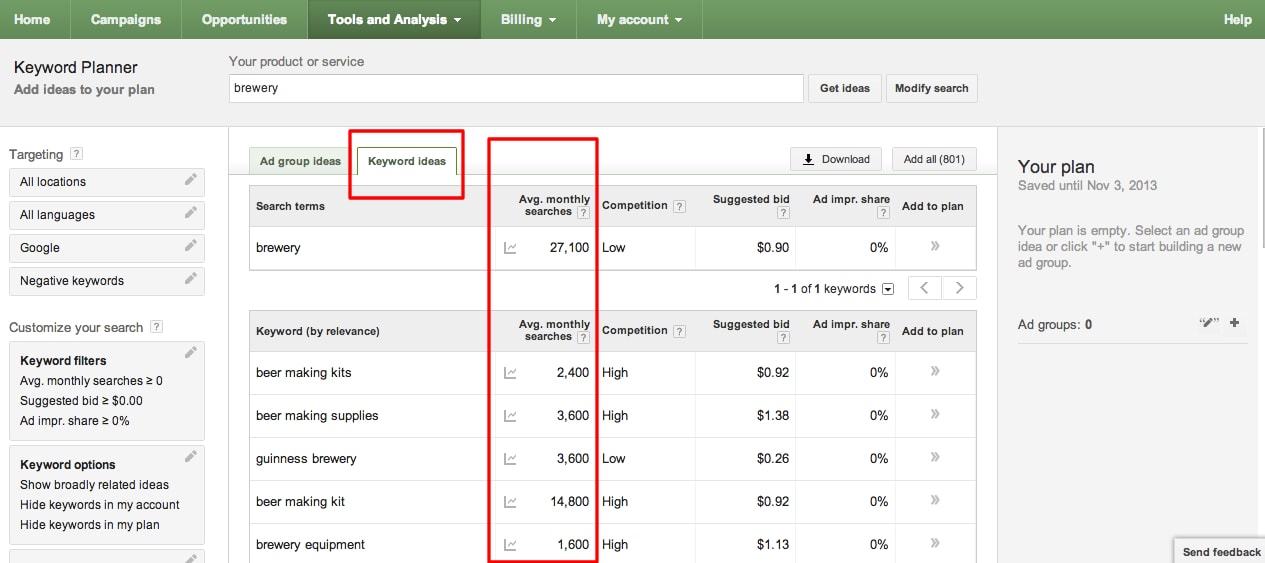
You can even narrow down keyword popularity based on distinct factors such as geography and level of competition.
If your focus is on conversions, your approach to determining value will be different.
Your best bet is to segment keywords based on the 4 different types of intent.
Navigational: When the keyword serves as a means to navigate to a specific

Informational: When the searcher is looking for a specific answer or educational resources.

Transactional: These keywords hint at the searcher’s desire to take a specific action.
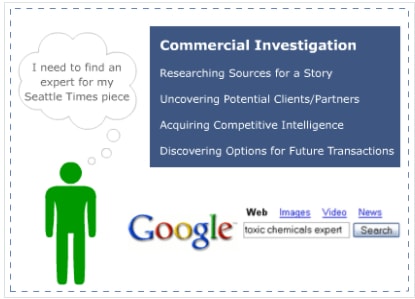
Branded: When a user mentions a specific brand or website.
The keywords that are best suited for conversions are transactional in nature. This is when searchers are at the end of a conversion funnel and ready to make a purchase.
Here’s a sample of how you might assign value to conversion-oriented keyword:

Tools To Speed This All Up
If you think that repeating all the steps mentioned above for every keyword you brainstorm in your seed list will take forever, you’re right.
More frustrating? By the time you narrow down a list of the top 3 or 5 keywords to target, things may change.
Keyword research tools can immensely speed up this process. All it takes is a few clicks to find keywords that are worth going after.
Here are the 7 keyword tools that will simplify your life.
1. Spy On Your Competitors With Ahrefs
Apple may have introduced touchscreens to the market, but it didn’t take long before this feature became universal across all smartphones (sorry BlackBerry).
By piggybacking off Apple, others were able to minimize risk and save valuable R&D costs.
Similarly, you can gain invaluable information by spying on the keywords your competitors are using.
First, identify those competitors in the market that have similar products and/or services.
If your business is focused on a specific geographical area, don’t forget to include leaders in other locales.
Then, head over to Ahrefs and simply plug in the URL of your competitors. The tool will return all the popular keywords they are ranking for on SERPs (Search Engine Results Pages) and show you the traffic they are getting.
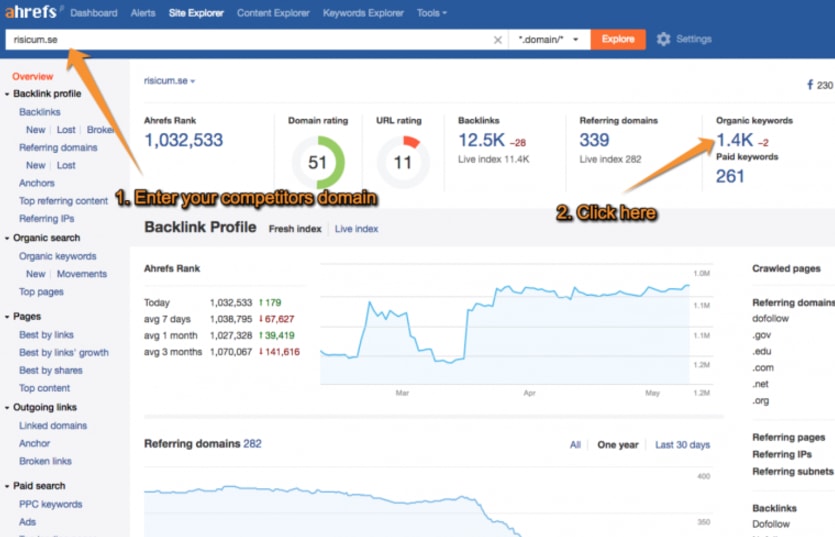
Do this for multiple competitors and you’ll have a list of readily usable and proven keywords you should be creating content for.
If you’re looking for an alternative spy tool, Spyfu is worth a look. With it, you can search for any domain and see every place they’ve shown up on Google: every keyword they’ve bought on Google Ads, every organic rank, and every ad variation they’ve used in the last 11 years.
2. Use Google Search Console to Build On Existing Success
If your site has been live for some time, you might already be ranking well for certain keywords.
Head over to Google Search Console and explore the “search analytics” section to uncover keywords for which you rank in the top 30. Look at “Position” to identify your best performers.
Here’s a sample of what you might see:

If there are multiple keywords that rank well, narrow down your choice by comparing the impressions and click-through rate (CTR).
Let’s say you run a Paleo diet blog.
After analyzing your site on search console, you find that your page for “paleo diet” ranks 9th. To get this page to rank higher, upgrade your content.
If your paleo diet blog post is 500-words, you’re just another voice in the storm. Aim to be the ultimate authority for this keyword by creating a definitive post.
There are a few ways you can do this:
- Update the page content in a way that Google recognizes it as new. Google favors “fresh” content over stale.
- Make sure to change enough of the content on the page to be recognized as fresh.
- Make your content “evergreen,” like this post from Lifehacker, to ensure a consistent stream of traffic and links.
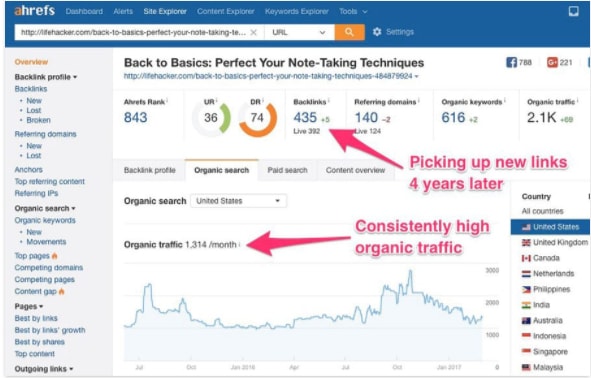
Even republishing content that is already definitive and evergreen can improve your page’s rank and traffic.
Moz performed an experiment to determine the effect of republishing blog posts to determine the effect on traffic. The results were impressive:
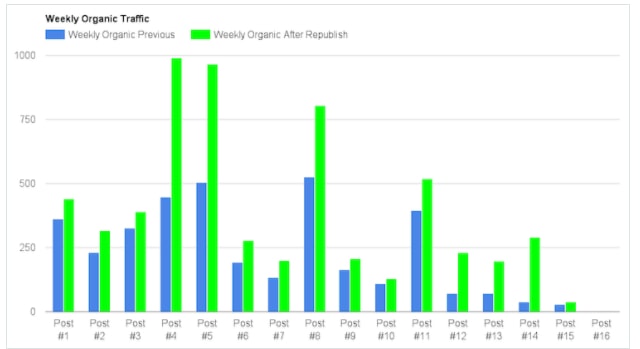
Just be sure you aren’t republishing a large number of articles too often without any actual content changes, as that could be viewed negatively by Google.
For the benefit of your readers, when you republish include an “originally updated on XX/XX, last updated on XX/XX” notation somewhere on the page.
Choose the best of your content that could use a boost and drive your own page rank by making it fresh.
3. Brainstorm Alternatives with UberSuggest
You know that targeting hyper-relevant long-tail keywords are likely to result in a higher ROI – they’re less expensive to target in pay-per-click and more likely to convert.
But how do you find the long-tail variations of your primary keywords that potential customers are actually searching for?
Simply plug in your target keyword into Ubersuggest and it will return a host of long-tail variations you could be ranking for.
Let’s say you type in “online marketing” as your keyword.
Ubersuggest will return long-tail variations such as online marketing tips, online marketing jobs, and online marketing strategies.
Take a look:
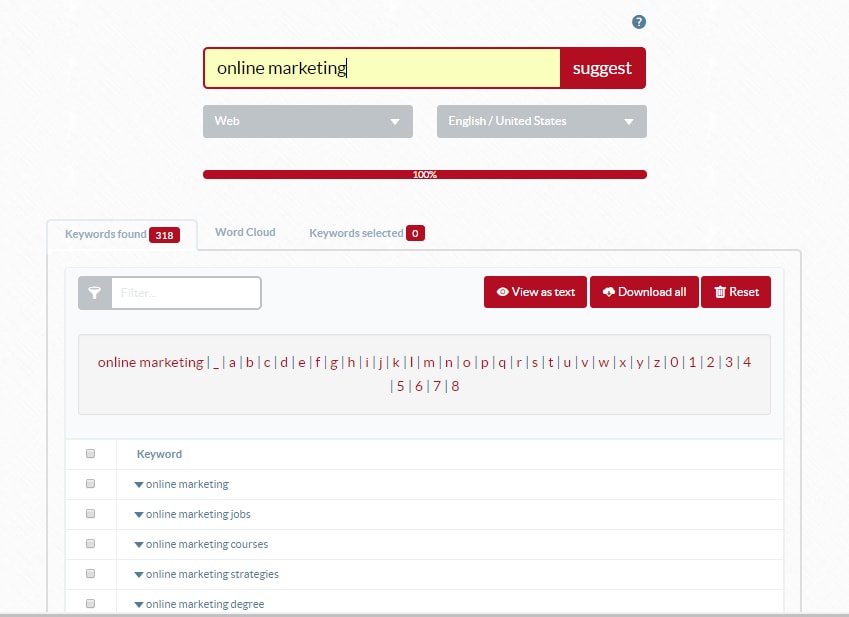
Simply add in words or phrases relevant to these suggestions, create the content, and you’ll start ranking for variations in no time.
For example, you might end up creating a blog post titled “best online marketing strategies for B2B companies.”
Another tool you can test out is AnswerThePublic.
Just type in your keyword and it’ll provide you with a list of questions commonly associated with that term.
Here’s a sample of results for the term social media marketing:
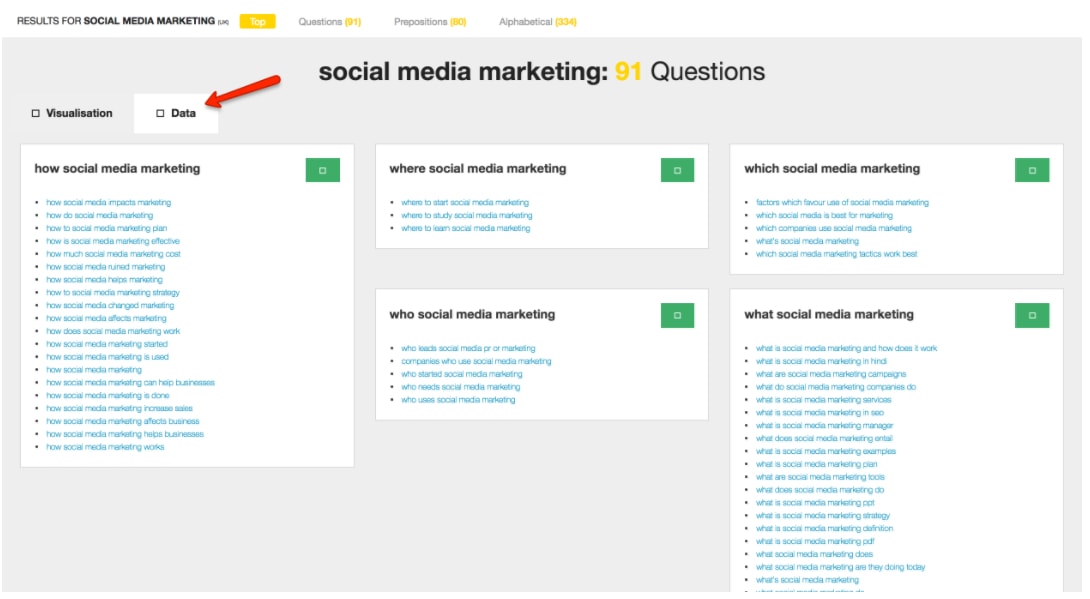
If you want to search keywords on platforms other than Google, checkout keywordtool.io.
It lets you search for what’s popular in a bunch of places like the App Store and YouTube.
Why would you care about popular searches on Youtube? It’s the second most popular search engine next to Google. Mining other platforms for keywords can give you an edge over the competition.

4. Learn from your Competition’s Ad Spend With SEMrush
When you notice someone repeatedly spending money on a keyword for PPC, it means that it converts well.
To find these popular phrases, head over to SEMrush and enter your competitor’s URL.
The tool will analyze their entire PPC campaign data and return a ton of insightful information such as the keywords they bid for most and the traffic it generates.

Make sure you go after the keywords your competition is spending the most money on.
5. Predict The Future with Google Trends
Keyword research is all about staying ahead of trends.
If you rely on historical data and only look at what has worked for others, you’ll be fighting an uphill battle.
There will likely already be substantial competition in the pay-per-click marketplace, and a wealth of in-depth content for that keyword already in existence.
This means you have to work extra hard to create something better.
OR get ahead of the pack and be the first one to the party.
Google Trends and Google Autocomplete can help you look ahead and determine what people are looking for.
Select an appropriate time frame to judge changes in interest for your keyword over time.
By looking at historical data, it’s clear to see that there’s been a rise in interest for digital marketing over the past couple of years.

Your job is to respond to people’s needs and create the content before others join in.
6. Use MarketMuse To Uncover Gaps In Your Content
If you’re determined to rank for a particular keyword despite the competition, you’ll need produce masterful content that can stand toe-to-toe with the top-ranked results.
A keyword stuffed page that doesn’t offer valuable information won’t do you much good.
Google rewards thoroughness.
Google scans your content to determine how meticulously you cover information around your root keyword.
The more comprehensive you are, the higher you rank.
To measure the performance of your content, use MarketMuse. It compares your work with similar content on the web to uncover keywords you are missing.
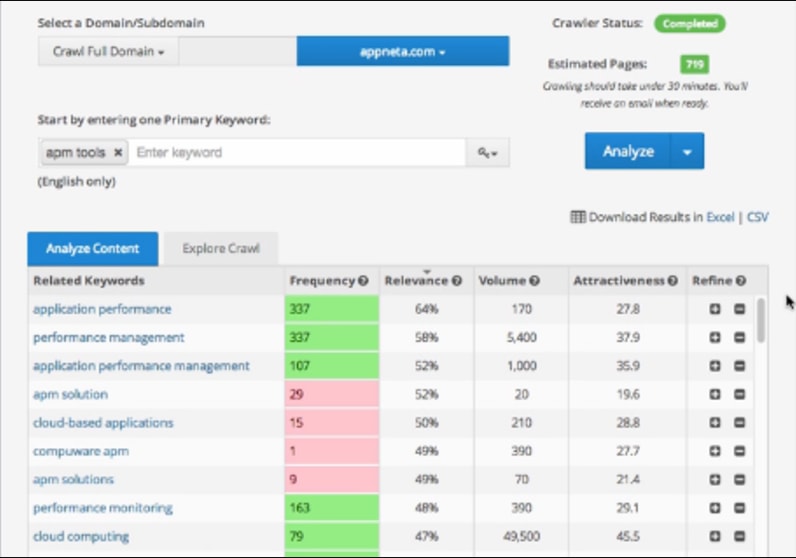
Make sure you update your content to include these ‘LSI’ keywords (Latent Semantic Indexing) in order to outrank your competitors.
7. Put it All Together With SerpStat
Being a relatively new tool in the market, SerpStat combines features from almost all of the aforementioned tools.
Simply type in your keyword and SerpStat and it will answer all who, what, or why related questions surrounding your target keyword.
Here’s a brief overview of its features. It will:
- Reveal the top pages for a keyword
- Provide similar search suggestions
- Suggest LSI keywords
- Show which keywords competitors are bidding for
Here’s what a sample search looks like:
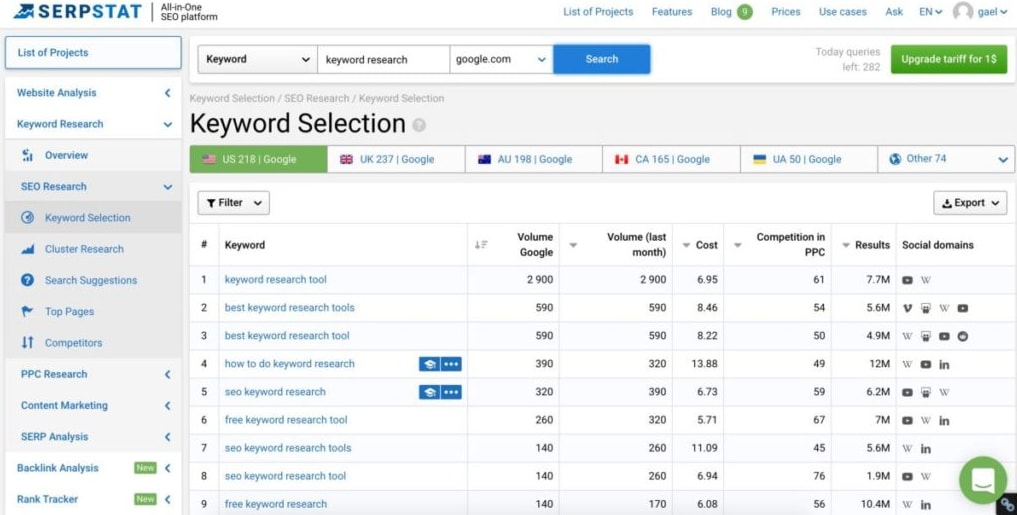
With so much variation of data in one place, you’ll be hard-pressed not to find a content idea worth targeting.
Conclusion
Until you know what words or phrases to optimize, your content strategy will fail to bring in traffic that sticks around long enough to convert.
Keyword research is an investment in the future of your business.
Use these tools speed up the process and create a battle plan that is backed by data rather than educated guesswork.
